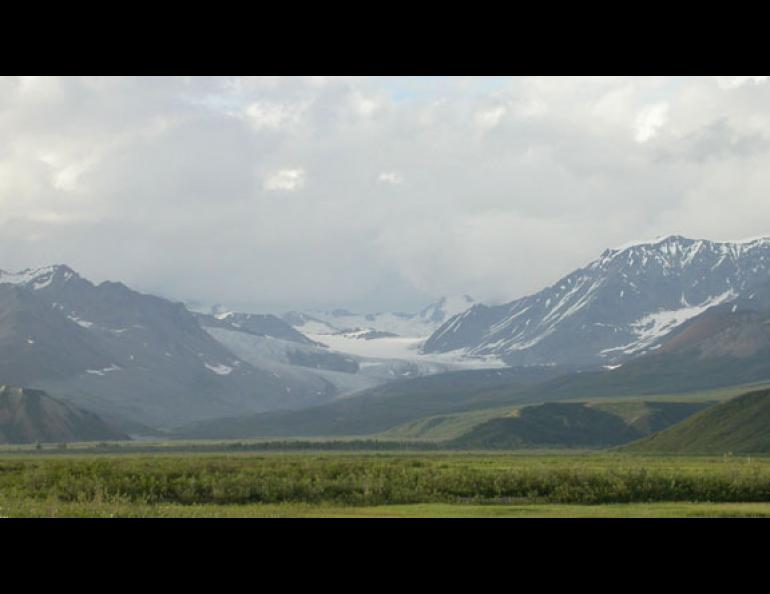
Gulkana Glacier buried while most of Alaska dry
Iditarod mushers and other Alaskans who love snow didn’t see much of the white stuff during the winter of 2002-2003, but they don’t live on Gulkana Glacier. This spring, scientists measured the largest seasonal snowpack in almost 40 years on this Alaska Range glacier.
Rod March and other researchers with the U.S. Geological Survey visited the glacier in May 2003 to dig snow pits and measure how much had fallen during the winter. At 6,000 feet elevation, more than 14 feet of fresh snow covered the glacier. More than six feet of snow coated the glacier at the 4,448-foot level. The snowpack was the largest measured by USGS scientists since they began charting the depth of fresh snow on Gulkana Glacier in spring 1966.
Glaciologists use the term “dying” to describe the majority of Alaska glaciers, including Gulkana, because over the past few decades most Alaska glaciers have melted more than they have grown. Gulkana’s impressive weight gain in the winter of 2002-2003—the equivalent of a 5.8-foot thick sheet of water coating the entire glacier—occurred in a year when snowfall around the state was well below average. Workers for the USDA Natural Resources Conservation Service measured the mountain snowpack throughout Alaska in spring 2003 and reported that the central Brooks Range was the only area in Alaska with an above-average snow cover in May. Their readings in the Alaska Range showed less than 50 percent of the average snowpack there, though they sampled at spots that were lower than Gulkana Glacier.
One possible reason that snow buried Gulkana Glacier this winter is the persistence of weather systems with a south flow, said Jim Brader, a meteorologist with the National Weather Service in Fairbanks. South flow in wintertime often causes a Chinook, warm air that the jet stream carries north from as far south as Hawaii. Chinook winds, which occurred often in the winter of 2002-2003, push moisture into south-facing slopes and generate strong, warm breezes in the Interior. Gulkana Glacier faces south.
“Gulkana Glacier is on the windward side during south flow, and it’s high enough to get snow rather than rain,” Brader said.
Despite its newfound bulk, Gulkana Glacier may end up losing weight by summer’s end. Summer melting has more to do with Gulkana Glacier’s fate than the snowfall it receives in winter because summer temperatures around Gulkana are more variable than winter snowfall. Precipitation is a larger factor in the growth or shrinkage of glaciers in Alaska’s coastal areas, such as Wolverine Glacier near Seward.
“Most of (Wolverine’s) mass changes follow the trends of total winter snowfall amounts,” said Anthony Arendt of the Geophysical Institute, a glaciologist and part of a team led by Keith Echelmeyer that found dramatic melting of Alaska glaciers and had its results published in the journal Science recently.
The USGS study of Gulkana Glacier that revealed its record snowfall is part of a long-term look at Gulkana Glacier, Wolverine Glacier, and South Cascade Glacier in Washington that glaciologists have worked on for more than 30 years.





